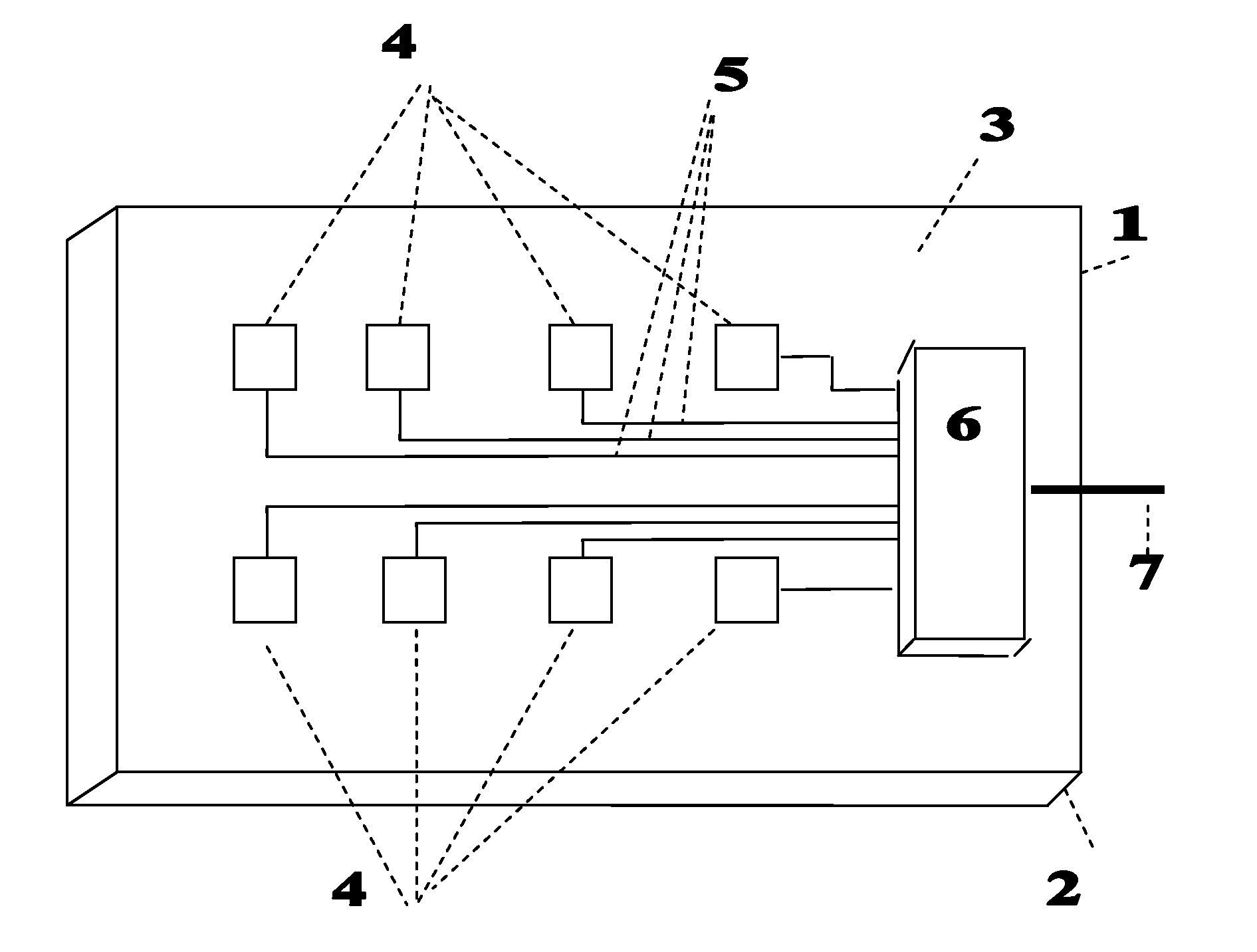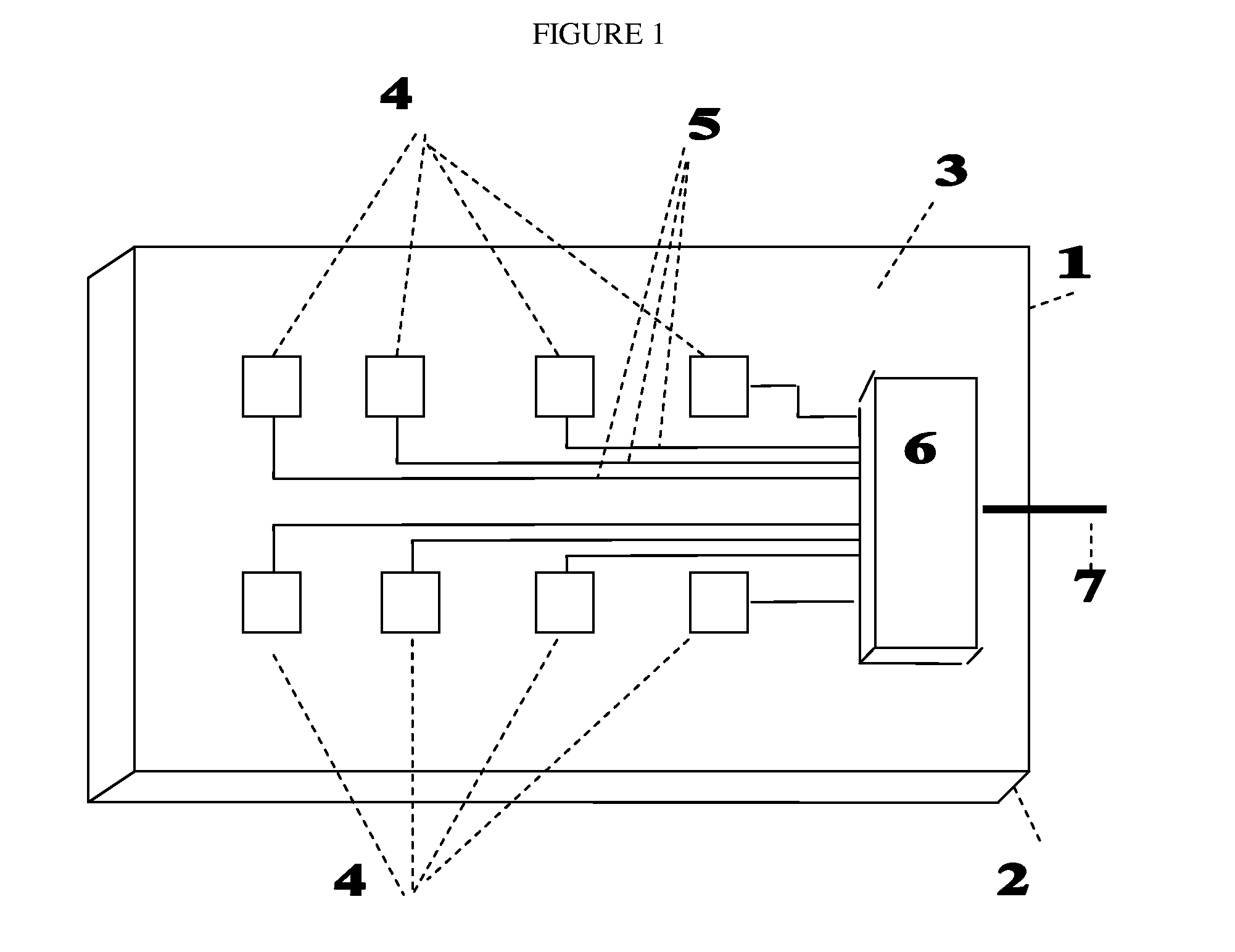Electrode arrays based on polyetherketoneketone
a polyetherketone and array technology, applied in the field of electrodes, can solve the problems of complex assembly steps, difficult cost-effective implementation of these technologies, and inability to adapt to all such desired end-use applications, and achieve the effects of good bonding, low cost, and low cos
- Summary
- Abstract
- Description
- Claims
- Application Information
AI Technical Summary
Benefits of technology
Problems solved by technology
Method used
Image
Examples
Embodiment Construction
[0024]The polyetherketoneketones suitable for use in the present invention comprise (and preferably consist essentially of) repeating units represented by the following formulas I and II:
—A—C(═O)—B—C(═O)— I
—A—C(═O)—D—C(═O)— II
where A is a p,p′—Ph—O—Ph— group, Ph is a phenylene radical, B is p-phenylene, and D is m-phenylene. Although the Formula I: Formula II (T:I) isomer ratio in the polyetherketoneketone can range from 100:0 to 0:100, in one embodiment a polyetherketoneketone having a T:I isomer ratio of from about 50:50 to about 90:10 is employed. In one embodiment, the polyetherketoneketone is semicrystalline. In another embodiment, the polyetherketoneketone is amorphous. Amorphous polyetherketoneketone can be easily extruded into a film, self-adheres, and is also capable of being readily vacuum-formed.
[0025]Polyetherketoneketones are well-known in the art and can be prepared using any suitable polymerization technique, including the methods described in the following patents,...
PUM
| Property | Measurement | Unit |
|---|---|---|
| thickness | aaaaa | aaaaa |
| thickness | aaaaa | aaaaa |
| size | aaaaa | aaaaa |
Abstract
Description
Claims
Application Information
 Login to View More
Login to View More - R&D
- Intellectual Property
- Life Sciences
- Materials
- Tech Scout
- Unparalleled Data Quality
- Higher Quality Content
- 60% Fewer Hallucinations
Browse by: Latest US Patents, China's latest patents, Technical Efficacy Thesaurus, Application Domain, Technology Topic, Popular Technical Reports.
© 2025 PatSnap. All rights reserved.Legal|Privacy policy|Modern Slavery Act Transparency Statement|Sitemap|About US| Contact US: help@patsnap.com



